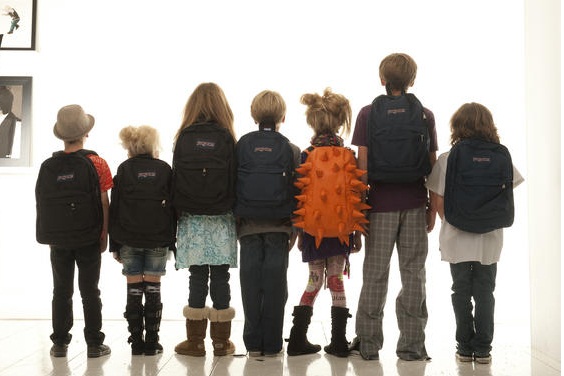Happy September!
This month, I’m going to be focusing on children’s health, happiness and well-being. I wanted to start out with ‘backpack awareness’. I know that there are millions of children around the world, who carry backpacks to school. I know, because I was one of them, and I wasn’t following these guidelines below. I was one of those, one-sided-strap-carrying-25-pound-carrying kids. I had a HEAVY backpack. And, I remember leaning forward to offset the weight and leaning to the side to offset for the one-sided carry. I encourage you to carefully read the below guidelines and help your child with making sure he or she is taking care of themselves. It can make a big difference for them in preventing spinal issues.
One of the fundamental pieces of any back to school ensemble is, of course, the backpack. Although they’re practical, backpacks are a leading cause of back and shoulder pain for millions of children and adolescents. As students head back to school, the American Chiropractic Association (ACA) offers parents advice on preventing unnecessary backpack pain and injuries.
The ACA offers the following checklist to help parents select the best possible backpack for their children:
- Is the backpack the correct size for your child? The backpack should never be wider or longer than your child’s torso, and the pack should not hang more than 4 inches below the waistline. A backpack that hangs too low increases the weight on the shoulders, causing your child to lean forward when walking.
- Does the backpack have two wide, padded shoulder straps? Non-padded straps are not only uncomfortable, but also they can place unnecessary pressure on the neck and shoulder muscles.
- Does your child use both straps? Lugging a heavy backpack by one strap can cause a disproportionate shift of weight to one side, leading to neck and muscle spasms, low-back pain, and poor posture.
- Are the shoulder straps adjustable? The shoulder straps should be adjustable so the backpack can be fitted to your child’s body. The backpack should be evenly centered in the middle of your child’s back.
- Does the backpack have a padded back? A padded back not only provides increased comfort, but also protects your child from being poked by sharp edges on school supplies (pencils, rulers, notebooks, etc.) inside the pack.
- Does the pack have several compartments? A backpack with individualized compartments helps position the contents most effectively. Make sure that pointy or bulky objects are packed away from the area that will rest on your child’s back, and try to place the heaviest items closet to the body.
The ACA recommends that parents or guardians help children pack their backpacks properly, and they should make sure children never carry more than 10 percent of their body weight. For example, a child who weighs 100 pounds shouldn’t carry a backpack heavier than 10 pounds, and a 50-pound child shouldn’t carry more than 5 pounds.
In addition, parents should ask their children to report any pain or other problems resulting from carrying a backpack. If the pain is severe or persistent, seek care from a doctor of chiropractic or other health care professional.
So there you have it. Let me know if you can use any support.
With many blessings,
Dr. Arjan Khalsa With many blessings and warm regards,
Dr. Arjan Khalsa

